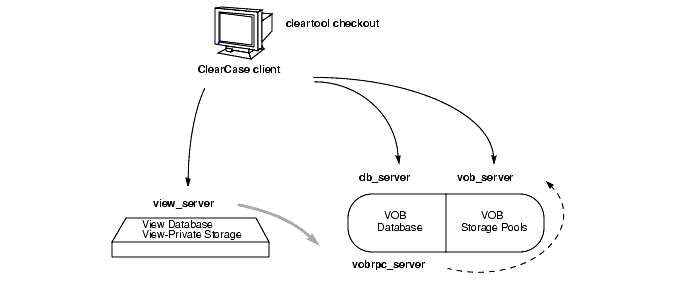


|
Because ClearCase is a distributed client/server application, multiple processes, often running on multiple hosts, can play a role in the execution of ClearCase commands. For example, this is what happens when a user checks out a file element:
The user's client process-cleartool, for example, or a GUI-issues a checkout request, in the form of a remote procedure call.
The checkout procedure requested in the RPC is handled by several server processes, which run on the host serving the VOB in which the requested element resides.
A view-private copy is made of the version being checked out. Making this copy involves the view_server process that manages the user's view. It can also involve other hosts:
The user's client process and the view may be on different hosts.
The VOB storage pool that holds the version being checked out may be located on a different host from the VOB storage directory.
On UNIX, the view may have a private storage area that is located on a different host from the view storage directory.
ClearCase server processes handle all this automatically and reliably. Users need not be concerned with server-level processing. As an administrator, your responsibilities require a good understanding of the client and server process distribution across your local network.
Figure 2 shows the communications paths that connect a client process with server processes.
Figure 2 Client/Server Processing
|
Feedback on the documentation in this site? We welcome any comments!
Copyright © 2001 by Rational Software Corporation. All rights reserved. |